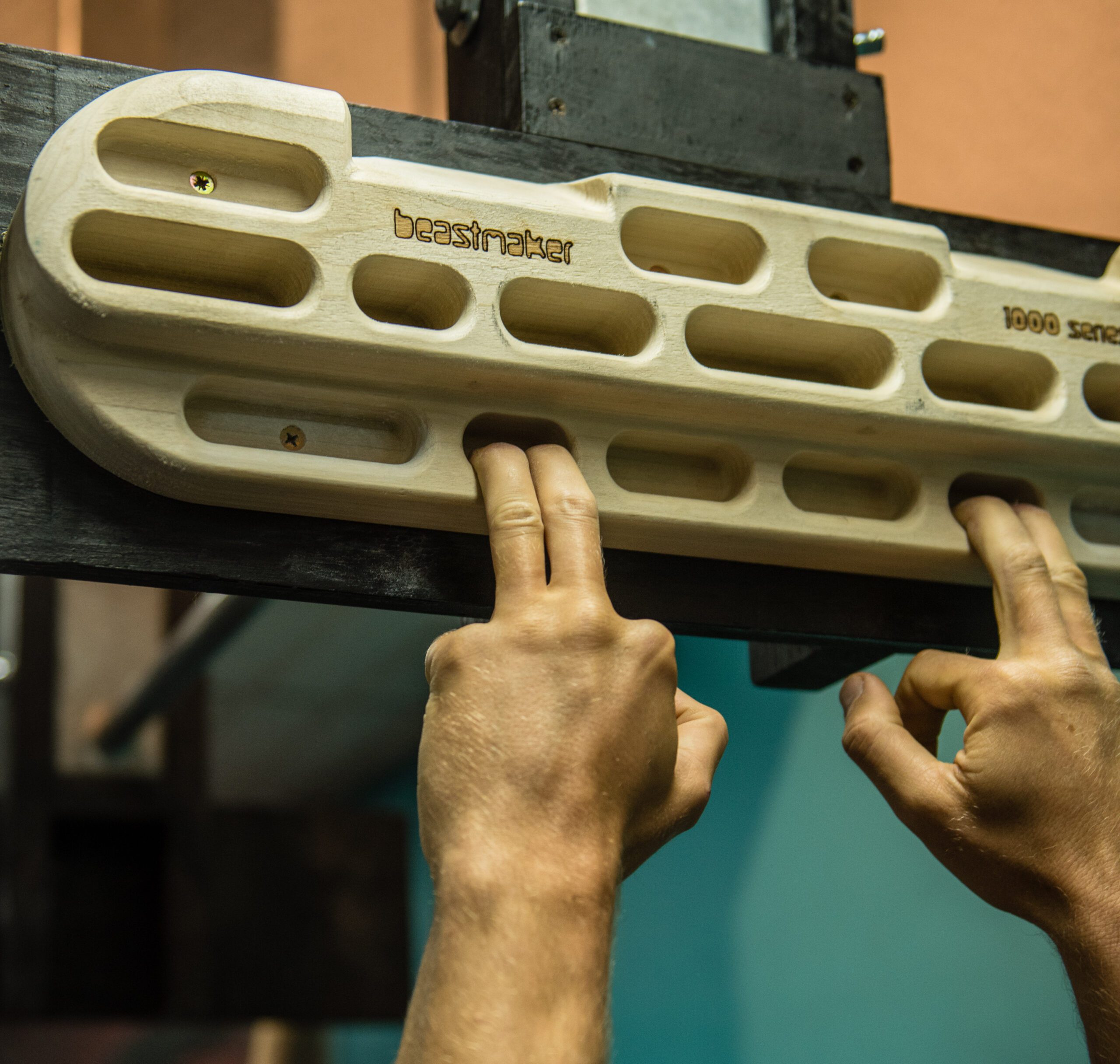
"Don't touch the hang board till you've been climbing for at least 2 years"
"Crimping is a BIG NO. Avoid crimping at all costs"
"Hangboarding is really risky. Your tendons just aren't ready for it"
Do these statements sound familiar to you? Chances are, someone has given you this advice at some point in your climbing journey.
"Be careful whose advice you buy, but be patient with those who supply it"
- Mary Schmich, Chicago Tribune
Often this type of advice is well-intentioned but it can lack context and create unnecessary fear around this valuable training tool.
A lot of this fear is around getting injured. So, let's unpack this.
Written by Mika Singh
Mika is an ASCA Strength & Conditioning coach and has been climbing for the last 10 years. She loves helping people apply strength training principles to their sport. Mika is also a member of Clinical Athlete, a mission-driven community where coaches and clinicians collaborate to provide evidence-based training and rehabilitation.
Some injuries are entirely unforeseen, and no amount of planning could have prepared you for them.
Someone left a banana peel on the floor, you slipped and fell on your wrist. Dang, you weren't even climbing!! Sh!t happens!
Other injuries are thought of as "overuse" (or shall we say "under-prepared”) injuries. You climbed 7 days in a row and now your pulleys hurt.
For Adam Ondra, climbing 7 days in a row is probably well within his body's capacity.
For us mere mortals (people with less extensive climbing backgrounds and other life commitments) this might be too much load to recover from.
Rather than thinking of it as "overuse" it’s helpful to reframe this as "under-prepared" Your body was not prepared for what you demanded of it. (credit to Natasha Barnes for this nugget!)
In other words, when the load you expose your body to exceeds your body's capacity to tolerate said load, you may experience injury.
LOAD > CAPACITY = INJURY
While it's awesome to have this neat looking equation, unfortunately it's far more complicated than that!
Perhaps you got injured and your mate (with the same training age and same loads) was fine. How annoying!
Everyone is different and injuries are also a symptom of what else is happening in your life. How was your sleep that week? How was your nutrition? How was your overall stress and mindset? These lifestyle factors have far more of an influence than you may think.
I could go on and on about all the variables that may or may not cause injury, but I want to get back to the topic at hand (no pun intended) HANGBOARDING!
TL;DR: Don't blame the board! Look at the bigger picture.
Pulling on a hangboard as a beginner is not going to instantly explode your tendons. BUT! The key thing is: you must adapt the activity to a tolerable level for where your fingers are at.
Familiarise yourself with the main grip types: Half crimp, 3 finger open, 4 finger open and yes, even the notorious crimp. Think about your current habits - do you have a preference for one grip over the other? Pay attention to how you grab holds on the wall.
The board is a low-pressure environment to have a play and experiment!
Start gentle. Keep your feet on the floor and explore different grips and holds, making a mental note of how your fingers feel.
You can use the board to warm up your fingers before you jump on the wall or as a stand-alone training session. If you want to add some structure to your training, a good place to start is with Repeaters.
Essentially: Keep the load within the limits of your current capacity and gradually progress the difficulty over time.

What about crimping, is it a riskier finger position? Should you avoid it?
Yes and no!
Yes, crimping does put more load through your pulleys, making it a more aggressive gripping strategy. There is always risk if you are under-prepared for a task.
So, should you avoid it?
My opinion? NO! You cannot prepare for a task by avoiding it. You should practise this grip using an appropriate load management strategy.
Start with an entry point that’s tolerable for your fingers (i.e., a suitable regression for you) and gradually increase your body’s tolerance to this grip position over time. “The dose makes the poison” as they say – be sparing with this grip and adjust it against how much crimping you’re doing on the wall. Ensure you track your training loads to avoid sudden "spikes" in loading.
Remember: By adding a Hangboard session, you are adding extra load to your fingers.
How does this extra load factor into your other training?
Start small, try to track what you’re doing and monitor how your fingers respond. At first, you may need to shorten your climbing time to account for the extra finger load.
Also consider timing: It’s usually best to hangboard while you’re fresh (don’t add challenging tasks after a big session when you’re already knackered!)
Last but not least, weigh this up against your overall goals. If you have limited time, ask yourself this question: what’s the most valuable use of my time? What am I looking to get out of my climbing?
People are often hesitant to recommend hangboarding to beginners because there is so much to learn from "just climbing" and moving your body on the wall. That being said: there’s no harm in doing both. In fact, practising different grips on a hangboard can help you build awareness of your finger positions and better prepare you for challenging holds you may encounter one day.
To sum it up, my opinion is: The hangboard is a perfect tool to practise different grips and adjust the difficulty to suit your current level. Practising things in a controlled manner sets you up for success when you're exposed to these conditions in a more dynamic setting, like on a climb. Whether or not you use this tool, depends on your overall goals.
To end with one last Mary Schmich quote:
"Enjoy your body, use it every way you can. Don't be afraid of it, or what other people think of it, it's the greatest instrument you'll ever own."
If you are interested in learning more about Hangboarding, Mika will be running a weekly class at Climb Fit St Leonards Tuesday nights at 6.45pm. Starting AUGUST 6th 2024. This class is appropriate for Beginner-Intermediate climbers, book in here
If you would like to discuss more individualised training plans and goal setting, contact Mika here
*Please note: This is an opinion piece and should not replace any medical advice. If you have a finger injury please consult with a rehab professional.